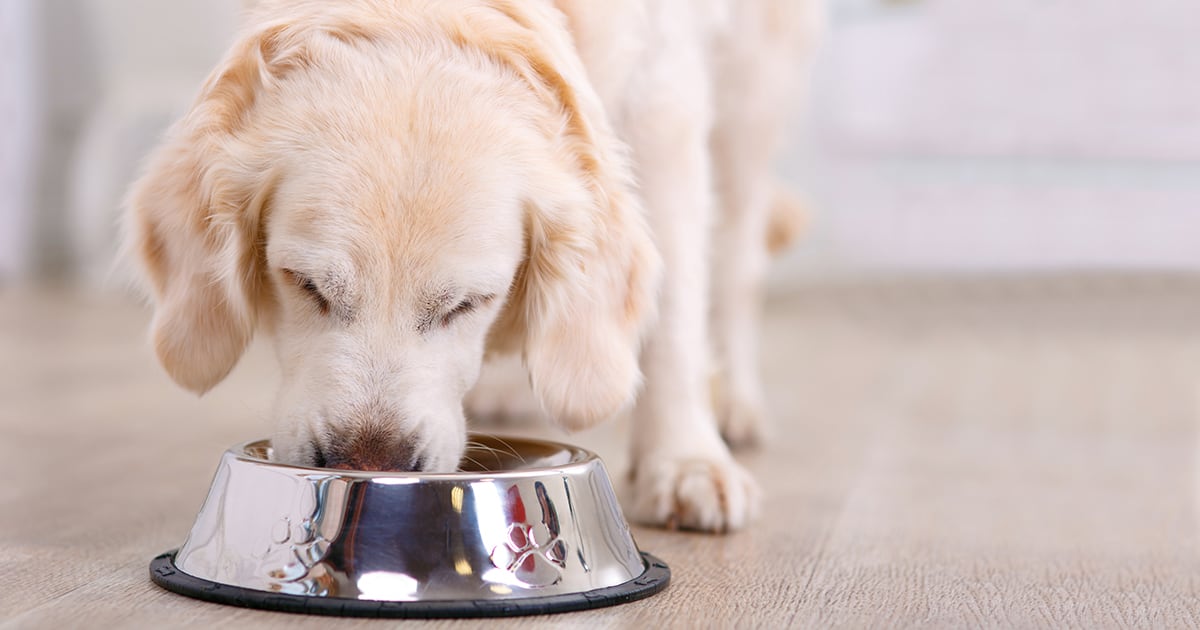How to Slow Down Your Speed Eater

Does your pet inhale each meal in less than a minute flat?
If so, it’s not just a matter of poor table manners.
Some dogs simply attack their meals with more gusto than others. Labrador retrievers, for example, are notorious food gobblers, counter surfers and garbage pirates. Others may eat fast because they either had to compete for food in a previous life or need to in their current household.
Unhealthy and potentially dangerous
Pets that scarf up their meals are at risk for several problems. They could choke on kibble, or the food may come back up as quickly as it went down. Fast eaters may also gulp extra air, leading to a gassy pet.
If a dog eats too fast, especially a large, deep-chested breed, it can develop bloat (also known as gastric dilatation), where the stomach expands with air. Or worse, the stomach can twist on itself (gastric dilatation volvulus), cutting off the blood supply to internal organs, a potentially deadly condition that usually requires emergency surgery.
Finally, some owners may assume pets are eating quickly because they’re not being fed enough. Don’t be fooled: giving them more food can lead to overweight or obese pets.
Encourage your pet to slow down
There are a number of ways to help your pet break the speed-eating habit:
1. Feed pets in separate areas. If you have multiple pets, try feeding each one in a different room, with the door shut. Dining solo may help relieve any angst they might have about other pets chewing up more than their share.
2. Use a “go-slow” feeder. Available in versions for cats and dogs, these feeders contain ridges or obstacles your pet has to maneuver around to make it harder for them to suction up all the food at once. Feeders can usually be used with canned or dry food.
In a small study,1 dogs eating from a go-slow feeder consumed rations more slowly than those eating from a traditional bowl. As dogs became more experienced with the go-slow feeder, they were able to increase eating speed, but it was still slower than with conventional bowls.
3. Try food puzzles. With these devices, your pet must work for their food, typically by rolling a ball or flipping a lever. Dry kibble is dispensed slowly, and pets get the added benefits of intellectual stimulation and a little exercise.
4. Spread food on a cookie pan or divide it into muffin tins. Again, this is one way to limit the amount of food your pet can vacuum up in one mouthful.
5. Use snuffle feeding mats. These are typically rubber mats with fabric strips sprouting from them. When dry kibble is scattered in the mat, the pet must forage to find individual bits of food.
6. Feed smaller meals throughout the day. Who says your pet has to eat from a bowl? You can take your dog’s daily allotment of kibble and place it in a treat pouch, then reward your dog with food during walks and training sessions all day long. For cats, divide the daily food allotment into small portions and hide them around the house so your cat exercises while hunting for food.
If your pet still has a problem, consult your veterinarian or a veterinary behaviorist.
Reference
1 Buckley L, Lees J. 2016. Go Slow Feeding Bowls: How Effective Are They at Getting Dogs to Eat More Slowly? Veterinary Evidence 1(4). https://doi.org/10.18849/ve.v1i4.71.
